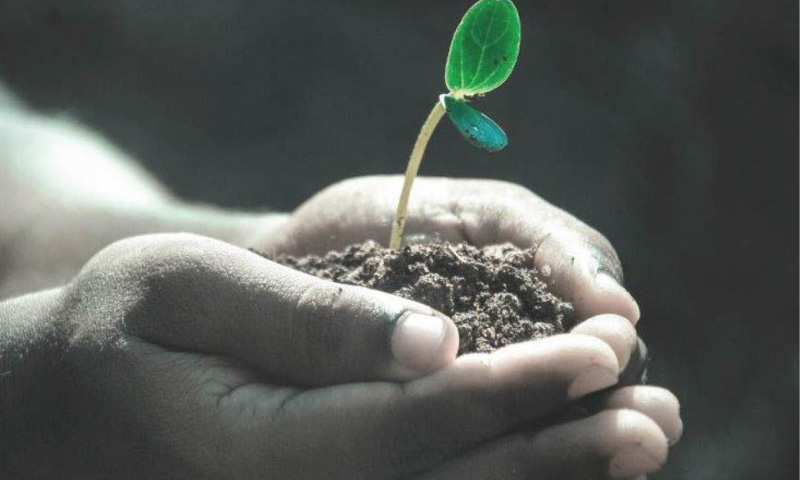Soil is a living and life giving natural resource that can be defined as a complex natural material derived from decomposed and disintegrated rock and organic materials. Soil provides a number of essential functions such as: physical stability and support for plants, a site for nutrient storage, the diversity and productivity of living things depends on the soil, buffering and filtering of potential pollutants happen within the soil in addition to the regulation and control of where water flows.
Soil is a variable mixture of solid (organic and inorganic) material, liquids and gases. Healthy soil is full of life as large and varied populations of microorganisms, earthworms and insects live in the soil and play an important role in plant nutrition.
The weathering process of rock involved in soil formation is slow and continuous. The soil that is currently used in Australian agriculture could have taken thousands of years to develop so it is imperative that existing soils are protected from erosion and nutrient depletion that impacts on their productivity and can lead to soil degradation. The health of soils is an issue of utmost importance as healthy plants require soils with an adequate balance of nutrients to grow. Healthy herbivores require plants with an appropriate balance of nutrients to graze and healthy carnivores need herbivores with a suitable balance of nutrients that they can eat. Consequently, the health of all land organisms is interconnected with the health of soil!
Management practices that can improve soil health and increase productivity and profitability should be undertaken to protect this valuable resource and some useful strategies are:
- Get your soil tested! – Soil testing can outline specific details about current nutrient levels and requirements of the soil as well as providing an indication of soil structure. This valuable information can assist with decision making with regards to management strategies and input selection (e.g. Fertilizer use).
- Keep the ground covered as much as possible and this can be accomplished by forage and crop residue. Soil cover conserves moisture, reduces temperature, intercepts the destructive impact of raindrops, suppresses weed growth and provides a habitat for soil organisms that spend some of their life above the ground.
- Increasing the diversity of plant life can help increase soil health and function, reduce input costs and increase profitability. A diverse plant life above ground leads to a more diverse underground community. To achieve a high level of diversity, different plants must be grown. A lack of biodiversity can severely limit the potential of any cropping system and increase the incidence of disease and pest problems.
- Keep living roots in the ground all year as soils are most productive when soil microbes have access to living plant material. This is aided by increased plant diversity and can be achieved by incorporating cover crops into your pasture and crop systems.
- Minimise soil disturbances as much as possible as disturbances such as ploughing and overgrazing can result in bare ground and compacted soils that disrupt soil microbial activity. Appropriate pasture management and the introduction of reduced tillage methods into cropping systems will help keep soil covered.
The health of Australian ecosystems and soil health are interdependent. The land’s condition is exemplified by the functioning of both soil and plant communities. Incorporating management strategies to aid soil health will also allow mineral and water cycles to greatly improve and consequently result in an increase of forage and animal production.
AgSolutions provides a soil testing service, allowing producers to work with qualified Field Advisors to develop, implement and monitor a soil management program designed specifically to the soil and crop needs. Click on the following link for further information on our soil testing service or contact us on 1800 81 57 57.
